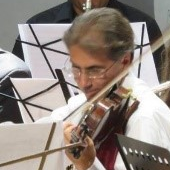Symmetry in Computational and Mathematical Methods of Fractional Calculus
A special issue of Symmetry (ISSN 2073-8994). This special issue belongs to the section "Mathematics".
Deadline for manuscript submissions: closed (31 October 2023) | Viewed by 6178
Special Issue Editor
2. Department of Mathematics and Physics, Autonomous University of Aguascalientes, Aguascalientes 20131, Mexico
Interests: fractional calculus; difference equations; differential equations
Special Issues, Collections and Topics in MDPI journals
Special Issue Information
Dear Colleagues,
The theory of fractional-order integro-differential operators (fractional calculus, for short) has been one of those areas in mathematics which has undergone a tremendous development in the last decades. Indeed, various fractional derivatives have been introduced in the literature to extend the traditional calculus and to provide more accurate descriptions of processes in physics, chemistry, and biology. From the analytic point of view, the theory of fractional-order integro-differential operators (along with their symmetry properties) has contributed decisively to the development of other areas in mathematics, including ordinary and partial differential equations, numerical analysis, calculus of variations, optimization theory, and symmetry analysis. From a more pragmatic point of view, some important applications of fractional calculus have been found in physics, biology, chemistry, and engineering, and new applications are frequently proposed to other areas of the sciences and to the development of new technology. Needless to mention that the speed at which this area expands is vertiginous.
The purpose of this Special Issue is to provide a means to communicate recent progresses in the field of fractional-order integro-differential operators and some of its most important symmetry properties. We invite researchers in this area to submit high-quality papers which stress the development of new computational and mathematical methods in fractional calculus. Applications of those methods to the analysis of the existence, uniqueness, symmetry, and regularity of the solutions of systems consisting of fractional integro-differential equations is an important topic considered in this work. The development and rigorous analysis of numerical methods to approximate solutions of systems of fractional-order equations is also a relevant topic in this Special Issue. Among others, optimization problems where the objective or the constraints are described in terms of fractional derivatives, the derivations of exact analytic solutions of systems of partial integro-differential equations, and the determination of new conservation and symmetry laws of these systems are all topics which are considered in this work. Likewise, the application of fractional calculus to modern problems in the sciences and engineering are problems which are covered in this special issue.
The potential topics include, but are not limited to:
- Fractrional-order integro-differential operator theory;
- Symmetry and conserved laws and properties;
- Analysis of the solutions of integro-differential systems;
- Development of new fractional integrals and derivatives, and their properties;
- Special solutions of fractional-order systems;
- Mathematical modeling through fractional integrals and derivatives;
- Fractional-order variational calculus;
- Numerical methods for integro-differential equations;
- Stability and convergence analysis of methods for integro-differential equations;
- Applications to the sciences and engineering.
Submit your paper and select the Journal “Symmetry” and the Special Issue “Symmetry in Computational and Mathematical Methods of Fractional Calculus” via: MDPI submission system. Our papers will be published on a rolling basis and we will be pleased to receive your submission once you have finished it.
Prof. Dr. Jorge Eduardo Macias-Diaz
Guest Editor
Manuscript Submission Information
Manuscripts should be submitted online at www.mdpi.com by registering and logging in to this website. Once you are registered, click here to go to the submission form. Manuscripts can be submitted until the deadline. All submissions that pass pre-check are peer-reviewed. Accepted papers will be published continuously in the journal (as soon as accepted) and will be listed together on the special issue website. Research articles, review articles as well as short communications are invited. For planned papers, a title and short abstract (about 100 words) can be sent to the Editorial Office for announcement on this website.
Submitted manuscripts should not have been published previously, nor be under consideration for publication elsewhere (except conference proceedings papers). All manuscripts are thoroughly refereed through a single-blind peer-review process. A guide for authors and other relevant information for submission of manuscripts is available on the Instructions for Authors page. Symmetry is an international peer-reviewed open access monthly journal published by MDPI.
Please visit the Instructions for Authors page before submitting a manuscript. The Article Processing Charge (APC) for publication in this open access journal is 2400 CHF (Swiss Francs). Submitted papers should be well formatted and use good English. Authors may use MDPI's English editing service prior to publication or during author revisions.
Keywords
- fractional calculus
- computational methods
- mathematical methods
- mathematical modeling





